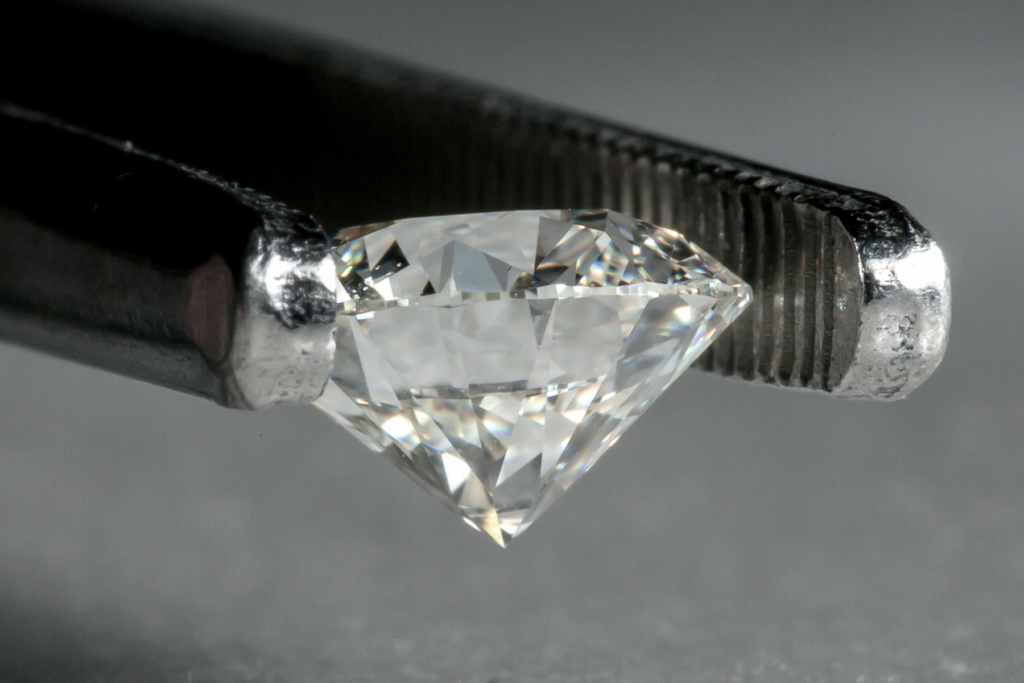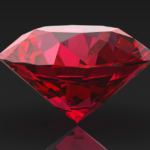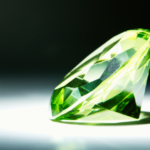How diamonds are valued
Ever wondered how a diamond’s worth is determined?
The 4Cs
Well, it all comes down to four characteristics, known as the 4Cs: colour, clarity, cut and carat weight. These are the globally accepted standards for assessing the quality of a diamond.
Much like a human fingerprint, every diamond has unique characteristics and the relationship between its 4Cs determines its value.
Many people assume that carat is the most important member of the 4Cs, but colour, cut and clarity have a much greater impact on the appearance of a diamond.
Colour
In nature, most white diamonds have a slight tint of yellow. A chemically pure and structurally perfect diamond has no hue, like a drop of pure water, and consequently, a higher value. The closer to being “colourless” a diamond is, the rarer it is.
Diamond colour is graded on a scale from D-Z and is divided into five broad categories (colourless, near colourless, faint, very light and light).
Generally, when comparing colour between two diamonds, the diamonds need to be at least two colour grades apart to even begin to see a difference. Even then, many diamond colour distinctions are invisible to the untrained eye. However, these distinctions make a very big difference in diamond quality and price, which is why the expertise of a gemologist and diamond grader is important.
Clarity
Clarity is the absence of inclusions (internal marks) and blemishes (external marks). Natural diamonds are formed under tremendous heat and pressure deep in the earth, so the absence of inclusions and blemishes increases a diamond’s rarity and value.
Evaluating diamond clarity involves determining the number, size, relief, nature, and position of inclusions and blemishes, as well as how these affect the overall appearance of the stone.
The highest diamond clarity grade is FL, flawless.
Many inclusions and blemishes are too tiny to be seen by anyone other than a trained diamond grader. To the naked eye, different clarity grades may look exactly the same, but these diamonds are quite different in terms of overall quality. This is why expert assessment is extremely important to help you understand diamond quality and price.
Cut
Diamonds are famed for their intense sparkle. We tend to think of a diamond’s cut as its shape (round, heart, oval, marquise, pear), but what cut actually means is how well a diamond’s facets interact with light i.e. how well it sparkles! This is determined by symmetry, proportion and polish.
More than any other factor, cut determines the sparkle and the beauty of the stone. If a diamond is cut poorly, it will look dull despite a high color and clarity grade. If a diamond is cut well, it will reflect and refract light for maximum brightness and sparkle. Two diamonds may have the same clarity, color and carat weight, but cut is what determines whether or not one is superior to the other.
Cut is the only one of the 4Cs that is affected by human hands. Precise craftsmanship is required to ensure a stone’s proportions, symmetry and polish deliver a magnificent sparkle. The ‘brilliant’ cut is the most popular. This is made of triangular and kite-shaped facets, all arranged to optimise brilliance, or light return. The round brilliant diamond, with 57 to 58 facets, is the most brilliant of the diamond cuts. Cushion, oval, marquise, pear and heart-shaped diamonds are also cut using the brilliant faceting style.
Carat
Carat refers to the weight of a diamond (not the size).
Carat weight can appear differently across different diamond shapes such as round brilliant, princess, pear, oval, cushion, marquise, emerald, radiant or heart. A diamond may have a higher carat weight without appearing larger and two diamonds of the same carat weight can vary in size if one is cut deeper than the other. In other words, it is important to note that carat weight does not necessarily denote size.
All else being equal, diamond price increases with diamond carat weight because larger diamonds are rarer and more desirable. However, two diamonds of equal carat weight can have very different values (and prices) depending on the three other factors: colour, clarity, and cut.
Prior to the twentieth century, diamonds were measured using carob seeds, which were small, uniform and served as a perfect counter weight to the diamond. The word “carob” is the origin of the word “carat” that we use today.
Get your diamonds valued
We can grade and report on your diamond using the internationally recognised 4C’s grading scale. This report is ideal for authenticating your diamond. A value can be included in your report on request.





